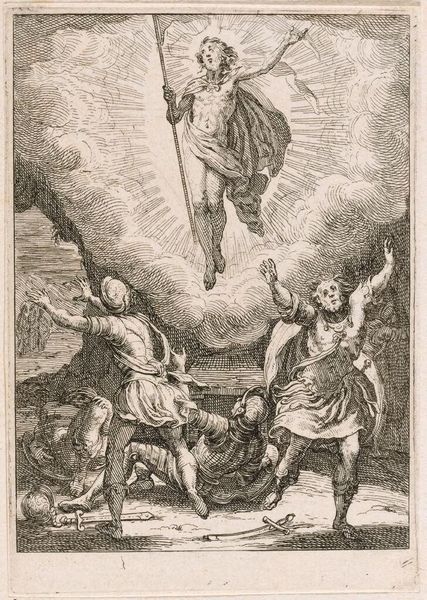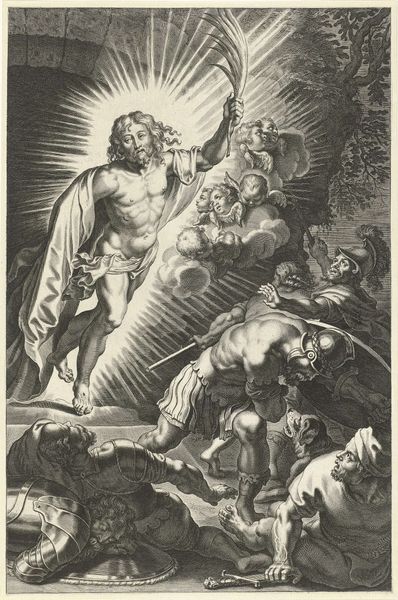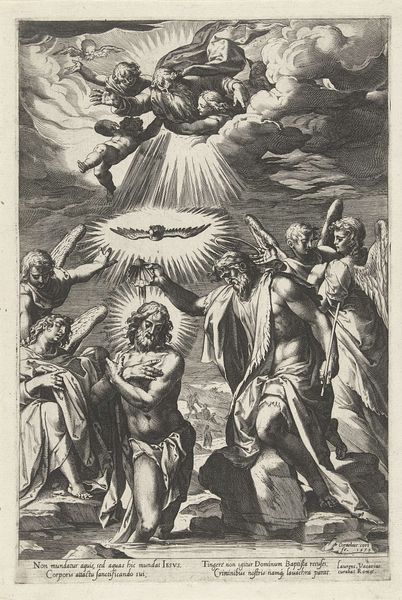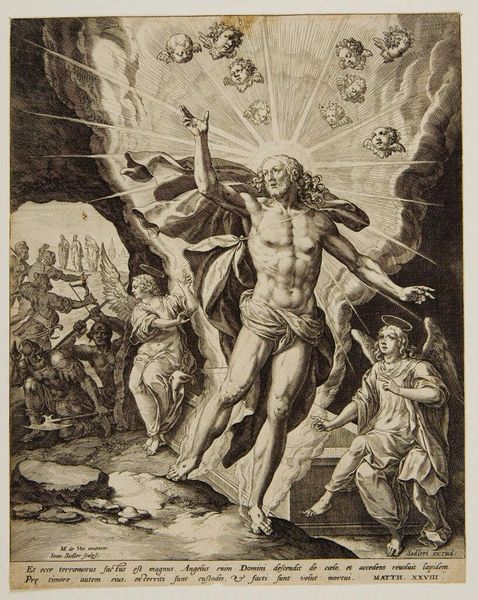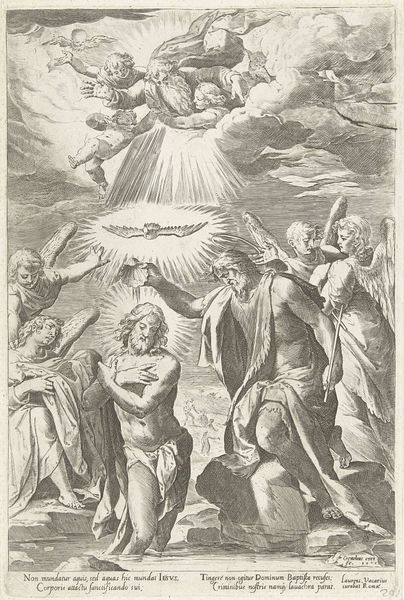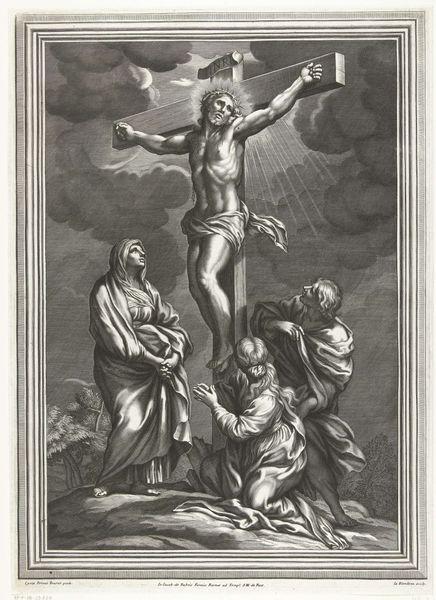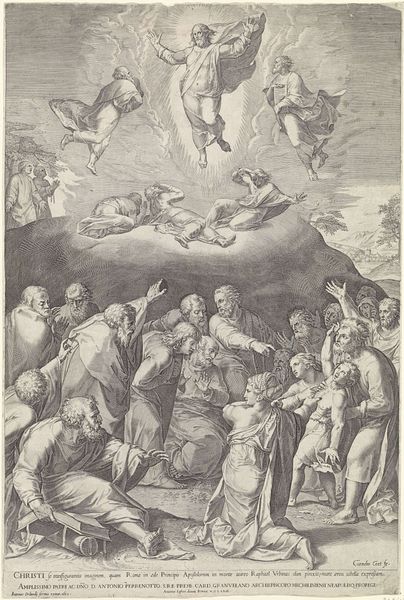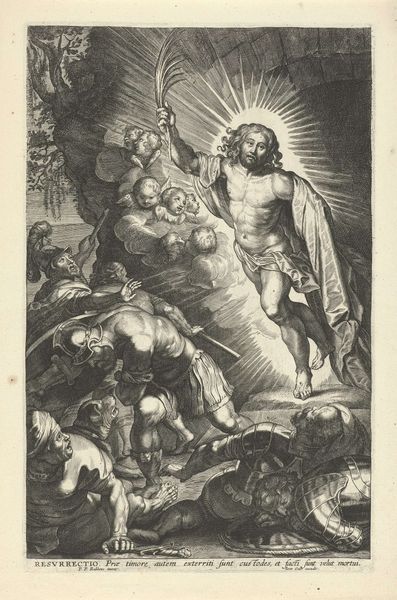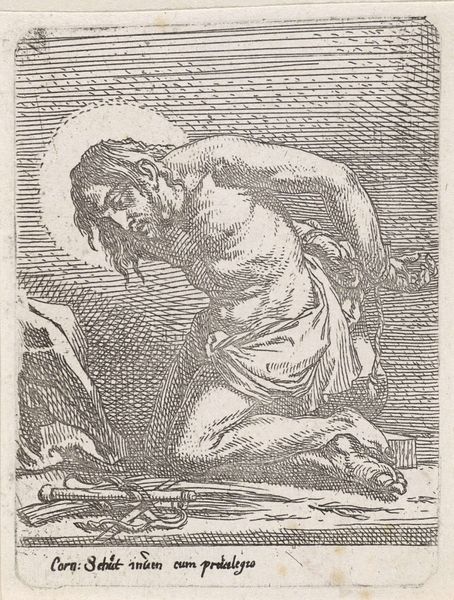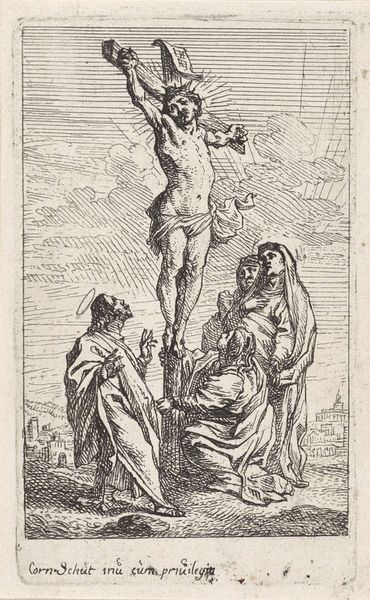
engraving
#
baroque
#
old engraving style
#
figuration
#
history-painting
#
engraving
#
christ
Dimensions: height 130 mm, width 81 mm
Copyright: Rijks Museum: Open Domain
This is Wenceslaus Hollar’s engraving, "Opstanding van Christus," made sometime in the 17th century. Immediately, your eye is drawn to the radiant figure of Christ, bathed in light, ascending from a dark, chaotic scene. The contrast is stark: the upper portion filled with a divine glow against the lower section mired in shadow and earthly disarray. Hollar uses the meticulous lines of the engraving to create a semiotic system. The radiant light surrounding Christ acts as a signifier of divine power, while the disoriented soldiers below, rendered with dense, chaotic lines, suggest earthly confusion and the collapse of human authority. The open tomb, precisely etched, becomes a symbol not just of physical absence but of a radical disruption of the natural order. The composition itself challenges fixed meanings. The traditional depiction of resurrection is upended by the visual emphasis on the instability and chaos left in Christ’s wake. Hollar invites us to contemplate the disruption inherent in the event—destabilizing established values and prompting ongoing interpretation.
Comments
No comments
Be the first to comment and join the conversation on the ultimate creative platform.

